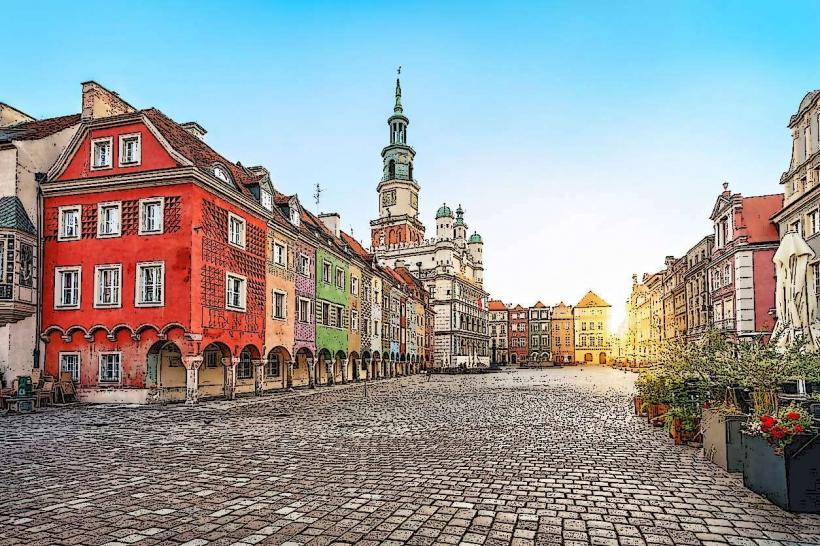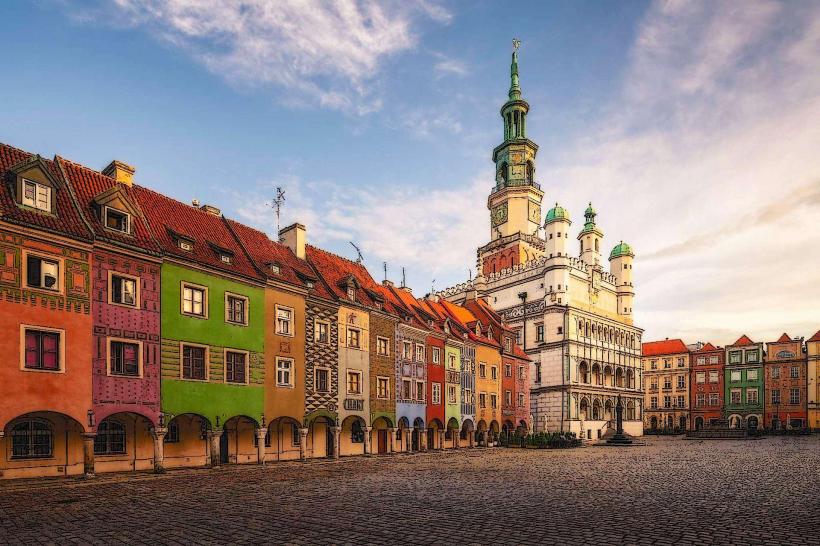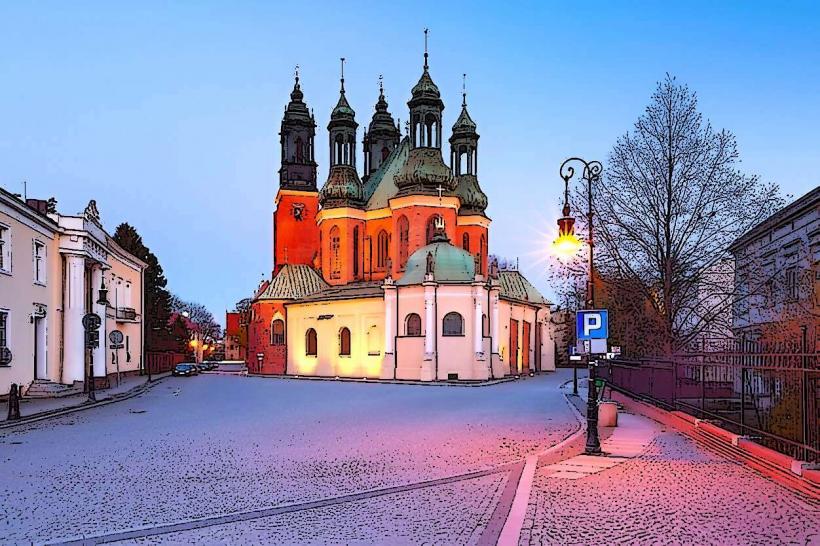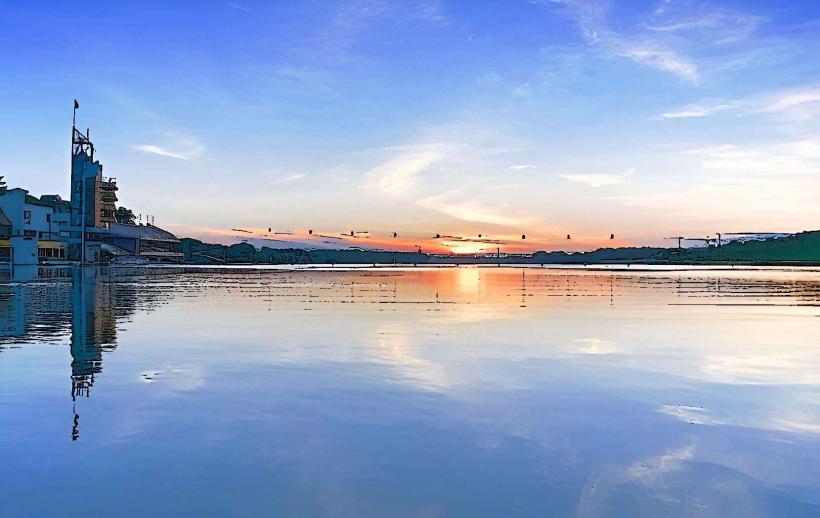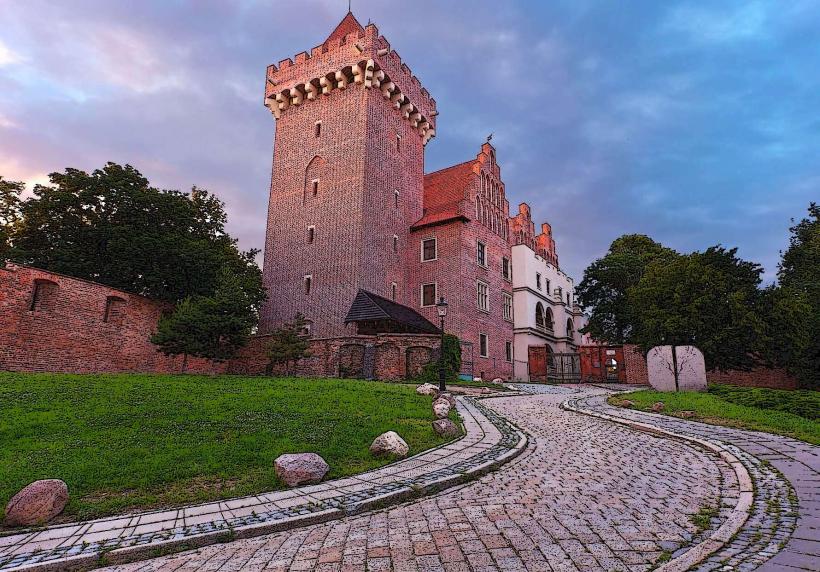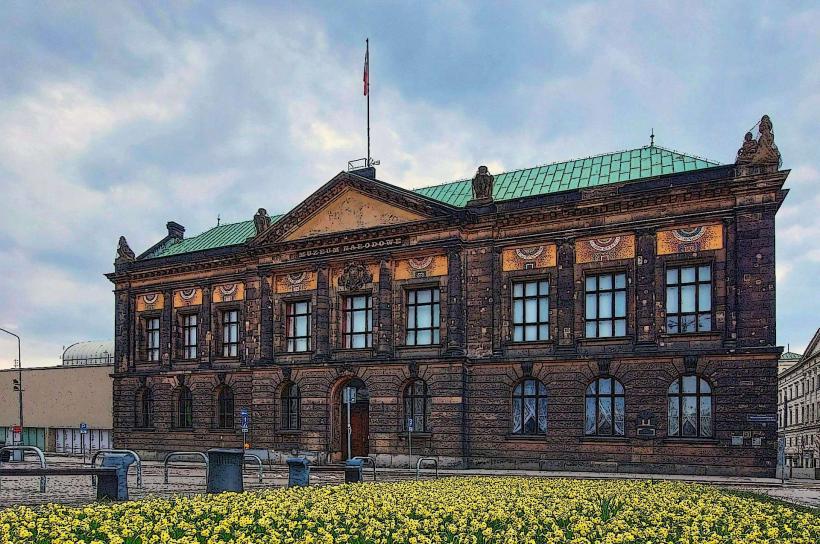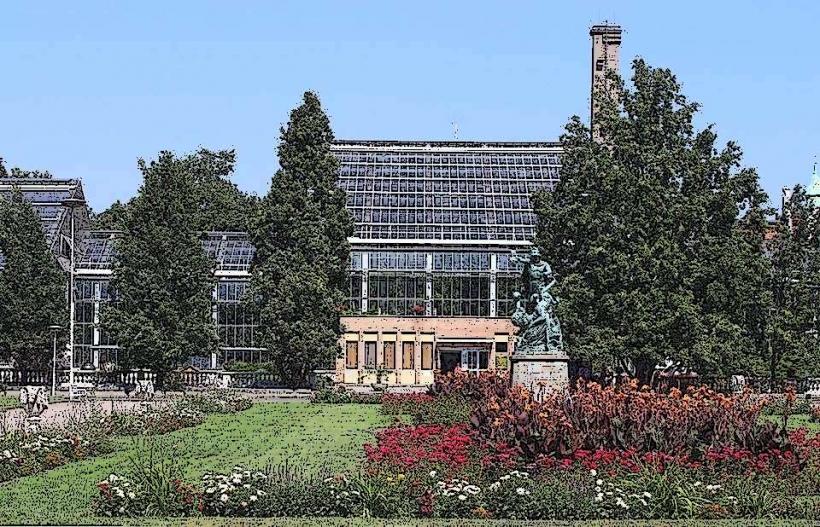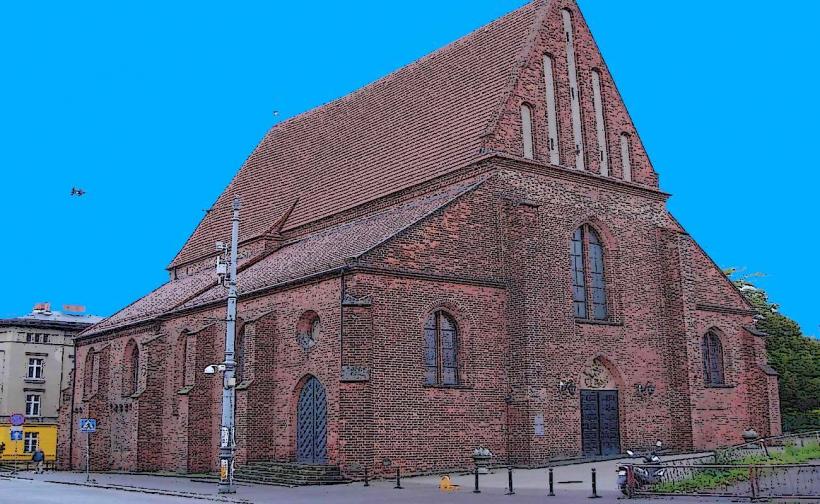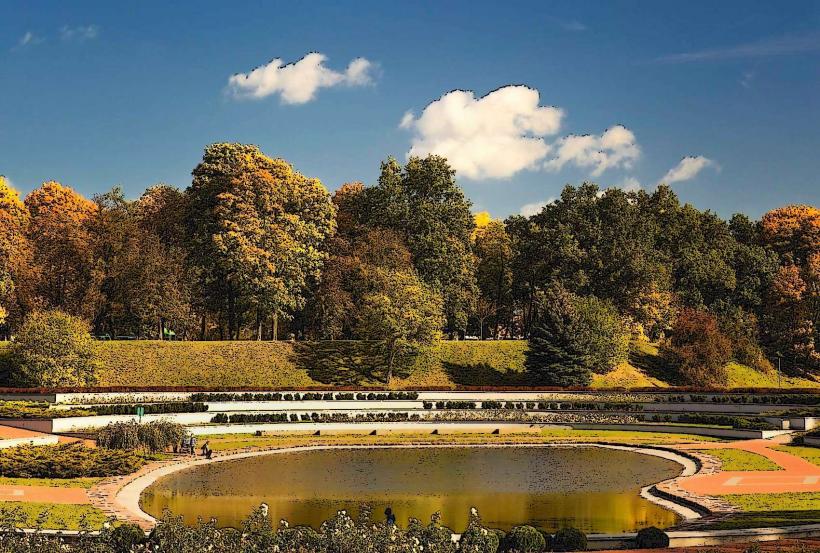Information
Landmark: Imperial CastleCity: Poznan
Country: Poland
Continent: Europe
The Imperial Castle (Polish: Zamek Cesarski) is a prominent historical building located in Poznań, Poland. Constructed in the early 20th century, it was initially designed as a residence for the German Emperor Wilhelm II, reflecting the grandeur and imperial ambitions of the German Empire at the time. Today, it serves as a cultural center, hosting exhibitions, concerts, and other events.
History
Construction and Purpose: The Imperial Castle was built between 1905 and 1910 during the time when Poznań was part of the German Empire. It was constructed by the German Kaiser, Wilhelm II, as a symbol of imperial power and to establish a presence in the region. The castle's construction was part of a broader effort to assert German dominance in the territories annexed after the Partitions of Poland.
Architectural Design: The castle was designed by the German architect Franz Schwechten, who was also responsible for several other notable buildings in Germany. The design was inspired by various European architectural styles, including Romanesque, Gothic, and Renaissance elements, resulting in a grand, imposing structure.
Imperial Residence: The Imperial Castle served as a royal residence for the German Emperor during his visits to Poznań. It was intended to demonstrate the power and prestige of the German monarchy in the region. The castle’s opulent interiors, large ceremonial halls, and impressive architecture made it an important symbol of imperial authority.
Post-World War I: After World War I and the collapse of the German Empire, the castle ceased to serve as the residence of the Kaiser. Following Poland's regaining of independence in 1918, the castle was taken over by the Polish authorities.
World War II: During World War II, the castle was occupied by Nazi forces, who used it for military purposes. Many of the castle's interiors and valuable artwork were looted or destroyed during this time.
Post-War Reconstruction and Current Use: After the war, the castle was largely restored, and in the post-war years, it became a cultural center. Today, it houses various institutions, including a museum, art galleries, and performance spaces. It remains an important cultural landmark in Poznań, offering a variety of cultural events and exhibitions.
Architecture
Style: The Imperial Castle is a mixture of neo-Romanesque, neo-Gothic, and neo-Renaissance styles. Its design includes strong, fortress-like elements, including tall towers, thick walls, and large arched windows, which are meant to evoke the majesty and power of the German Empire.
Exterior: The castle features a prominent central tower, which is one of its most striking elements. The tower is topped with a decorative crown and offers panoramic views of Poznań and the surrounding area. The main façade is adorned with statues, sculptures, and decorative details, making the building appear both imposing and elegant.
Interior: The interiors of the Imperial Castle were originally designed to be opulent and befitting the imperial residence of the German Emperor. Although much of the original furniture and decoration were lost during the war, the castle still retains much of its grandeur. It features large halls, stately rooms, and ceremonial spaces that evoke the imperial past of the building. Today, parts of the interior are used for cultural events and exhibitions.
Courtyards and Gardens: The castle complex also includes beautifully landscaped gardens and courtyards, which are open to the public. These outdoor spaces are a serene escape from the urban environment of Poznań and often host outdoor concerts and events during the warmer months.
Cultural Center
The Imperial Castle in Poznań is not only a historical monument but also a vibrant cultural center. It hosts a wide range of events, from art exhibitions to musical performances and theatrical productions.
Art and Exhibitions: The castle houses several art galleries, including contemporary art exhibits, historical exhibitions, and temporary displays focusing on various aspects of Polish culture and history. The cultural programming is diverse, offering everything from classical art to modern installations.
Concerts and Performances: The castle also has an auditorium that is used for musical concerts, including classical, jazz, and contemporary performances. The grand halls of the castle provide excellent acoustics, making it an ideal location for musical events.
Theater and Events: The Imperial Castle hosts various theatrical performances, festivals, and cultural events throughout the year. It is a focal point for the city’s cultural life, attracting artists and performers from Poland and beyond.
Visitor Experience
Tours: Visitors to the Imperial Castle can take guided tours to learn about the history of the building, its architecture, and its role in Polish and German history. The tours also provide insight into the restoration efforts that took place after World War II, preserving the building’s cultural significance.
Museum: The castle is home to several permanent exhibitions, including displays about the history of Poznań, Polish independence, and the history of the castle itself. These exhibitions help visitors understand the significance of the Imperial Castle in the broader context of Polish history.
Events and Festivals: The Imperial Castle is an important venue for local festivals and events, including Poznań’s International Theatre Festival, music festivals, and art fairs. These events attract both local residents and tourists, adding to the castle's vibrant cultural atmosphere.
Significance
The Imperial Castle in Poznań is an important historical and cultural monument. As a former royal residence and symbol of German imperial power, it represents a significant chapter in the history of the region. After being restored and repurposed as a cultural center, the castle continues to be a place of historical reflection and contemporary cultural exchange.
It is a must-visit destination for anyone interested in Poland’s complex history, architecture, and modern cultural life.

